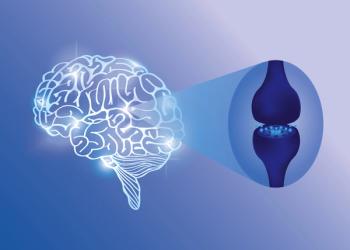Contemporary psychiatry has incorporated loneliness on two diagnostic levels: a personality trait and a clinical symptom. The former, defined by DSM-5 as “a tendency to feel, perceive, behave, and think in relatively consistent ways across time and across situations, would consider loneliness as present in detached, melancholy prone, solitary individuals, with limited interpersonal interactions and restricted affective experience and expression, ie, reduced hedonic capacity. Still, if alone, it would be just a trait, not a pathological entity. On the other hand, as a clinical symptom, loneliness can be part of a nosological entity characterized by abnormalities in different domains (eg, a personality disorder, or accompanied by several additional symptoms to constitute a variety of other diagnoses).
Mental Health in a Pandemic State: The Route From Social Isolation to Loneliness
The COVID-19 pandemic has gained its place on the dark side of world history for a variety of reasons: sudden onset, speed of global transmission, mistakes in recognition and management, politically inspired neglect or minimizations.
The COVID-19 pandemic has already gained its place on the dark side of world history for a variety of reasons: sudden onset, speed of global transmission, mistakes in recognition and management, politically inspired neglect or minimizations. The already dramatic infection and mortality figures have led to seemingly desperate and extreme government decisions in many countries. Its social, economic/financial, and public health impact is very impressive and, obviously, more powerful and damaging among the poor and disadvantaged population segments worldwide.
Not surprisingly, the mental health implications of this crisis were recognized early in the process. Psychopathological and clinical terms were used from the beginning by the media and social networks to describe attitudes, pronouncements, reactions, and behaviors from individuals and groups in different scenarios: fear, cynicism, lies, or denial moving to anxiety, panic, hysteria, and even . The scope of these words quickly broadened and became the subject of administrative, community-oriented measures, including the need to provide mental health or psychological counseling. From the perspective of the mental health professions, it is important to assess the emotional impact of some of those dispositions themselves. One of the most relevant examples is that related to the so-called social distance, later enlarged to
Every type of adverse situation, particularly in the health field, entails uncertainties and ambiguities. A measure such as “social distance,” for instance, is dictated in the name of social integrity, protection or solidarity; the imposition of “social isolation” invoked individual and group safety as its raison d’être. Social isolation may be just a phrase but, under the present circumstances, it is certainly a public policy order, a commandment, with intimations of punishment if and when not duly followed. It is precisely the type of disposition that can lead to a unique mood state, a multifaceted cognitive/emotional experience, mental feature-
The many faces of loneliness
The term was first used at the end of the 16th century to define “the condition of being solitary.” In 1677, Milton’s
Thus, loneliness exhibits a complex conceptual journey. The dictionary definitions of being without company, unfrequented, isolated, or lonesome describe an individual feeling as well as a social experience, a perception of abandonment and/or a desire for company or refuge; the latter can also make of loneliness an existential state, a way of looking at life and people as components of a reality that belongs to others. Still, away from a truly clinical nature but already delineating fragile junctures, loneliness may have solitude as a synonym, a very personal requirement for the exercise of meditation or reflections-a refuge, again.
The feeling of loneliness leads initially to reflections about what is going on at the present time. The uncertainties of a future worst-case scenario (eg, positive coronavirus test, gradual onset of symptoms, hospitalization, complications, etc) may give place, later, to reflections about one’s own life, expectations and hopes, accomplishments and failures, self-criticisms and self-condemnations, a sense of no-return. Missing alternatives in the near or distant past, grateful moments unable to be re-lived, failed job opportunities or attempts to improve or excel, the present (or absent) impact of religion, spirituality, romantic encounters, personal phantasies, or impossible dreams are all material agitated by the apparently quiet psychological surface of loneliness.
Contemporary psychiatry has incorporated loneliness on two diagnostic levels: a personality trait and a clinical symptom. The former, defined by DSM-5 as “a tendency to feel, perceive, behave, and think in relatively consistent ways across time and across situations, would consider loneliness as present in detached, melancholy prone, solitary individuals, with limited interpersonal interactions and restricted affective experience and expression, ie, reduced hedonic capacity. Still, if alone, it would be just a trait, not a pathological entity. On the other hand, as a clinical symptom, loneliness can be part of a nosological entity characterized by abnormalities in different domains (eg, a personality disorder, or accompanied by several additional symptoms to constitute a variety of other diagnoses).
The title of this essay includes the phrase The Route From Social Isolation to Loneliness, to delineate an eventual pathogenic chain that emerges from the forced social isolation ordered to prevent catastrophic events (such as a massive amount of severe
The necessary but still unusual (or abnormal) lifestyle determined by an obligatory home seclusion affects critical areas of the individual’s daily life, the conduction of his or her interpersonal relationships and, above all, deeply engrained temperamental features. Unquestionably, social isolation can operate as a triggering, exacerbating agent of loneliness, more so if the latter is already an established personality trait: together with other traits (ie, submissiveness, depressivity, anhedonia, distractibility, or impulsivity, to mention a few), a true personality disorder, compromising identity, self-direction, empathy and intimacy may be the critical, regrettable result.5
Moreover, a dramatic cascade effect can take place, more so if the preceding manifestations are not noticed or dealt with.6 In such a context, loneliness can become a core component (or symptom) of a variety of psychiatric disorders through a subtly or grossly declared clinical evolution: it can nourish despair and discouragement ending up in one of several types of depressive disorders and potentially self-destructive acts; it can aggravate fears and precipitate one or several types of anxiety disorders, including a variety of phobic syndromes; it can exacerbate behavioral styles that end up in conditions such as OCD; and last but not least, it can generate painful memories that, later, can make the experience of social isolation, prelude of a potentially invalidating PTSD.6,7
Management options
It is clear that COVID-19 has seriously challenged not only every line of protection and management installed by governments and public health authorities around the globe, but also-and fundamentally-the human, clinical, and practical resources of mental health service agencies. In addition to the fear of contracting the infection, the anguish of obtaining food, medications, hand sanitizers, and even toilette paper, we now also face the testing circumstances of home reclusion with demands of new adaptation strategies and a somber cloud of uncertainties. The emotional impact of being locked down, and the weight of the resulting loneliness generate waves of fear, urgent needs of a sort of family reorganization, different kinds of leadership and communication styles with and between adults, children, the elderly, the healthy, and the sick.
The victims of loneliness who share the physical reclusion as members of a family, must be encouraged by the group leader(s) to examine and verbalize their thoughts and emotions, recognize their strengths and limitations, identify specific fears and concerns, and threats and opportunities. They must discuss and practice new approaches to socialization and interpersonal transactions. By the same token, they must be provided with “free emotional spaces” for self-deliberations, searching for, and proposal of eventual management alternatives.8
On the other hand, if loneliness occurs in a purely individual context, the management is obviously more difficult. There is a need of outside contacts with health care providers and community agencies to elucidate whether the psycho-emotional events are of a clinical nature or not: if the answer is yes, dispositions and interventions, specific for the diagnosed condition(s) must take place. If it is the kind of response that most individuals would show in the face of social isolation, exhorting them to touch base with the outside world is still an indispensable first step. The affected person must, as well, devote diverse time segments to periods of self-exploration (ie, self-analysis), entertainment and humor, formal communications (using technology-based resources), reading/writing exercises, etc. The self-exploration tasks could include biographic remembrances, experiential memories, personal modeling and modulating (ie, identification of resilience cases, examples of adequate use of opportunities), self-teaching and learning, etc.
Conclusion
Facing exceptional experiences such as forced home stay (even if due to entirely justifiable reasons), leads to phenomena such as loneliness, conceived either as a normal effect of isolation or an emotional response with more or less significant clinical dimensions. In both cases, interventions aimed at normalizing the affected individual’s mental health must be implemented. The essential purpose of
Disclosures:
Dr Alarcon is Emeritus Professor of Psychiatry, Mayo Clinic School of Medicine, Rochester, MN, and Honorio Delgado Chair, Universidad Peruana Cayetano Heredia, Lima, Peru.
References:
1. de Figueiredo JM. Depression and demoralization: phenomenological differences and research perspectives. Compr Psychiatry. 1993;34:308-311.
2. Worsley A. A history of loneliness. The Conversation. March 19, 2018.
3. Izenberg G.
4. American Psychiatric Association. Diagnostic and Statistical Manual of Mental Disorders, 5th edition. Washington, DC: American Psychiatric Publishing; 2013.
5. Kruger RF, Eaton NR. Personality traits and the classification of mental disorders: toward a more complete integration in DSM-5 and an empirical model of psychopathology. Person Disor. 2010;1:97-118.
6. Alarcón RD, Glover SG, Deering CG. The cascade model: an alternative to comorbidity in the pathogenesis of posttraumatic stress disorder. Psychiatry. 1999;62:114-124.
7. Fulton JJ, Calhoun PS, Beckham JC. Trauma and stressor-related disorders: posttraumatic stress disorder, acute stress disorder, and adjustment disorder. Tasman A, Kay J, Lieberman JA, et al, Eds. Psychiatry, 4th ed. Chichester, W. Sussex, UK: Wiley Blackwell; 2015: 1142-1169.
8. Brown JF.
Newsletter
Receive trusted psychiatric news, expert analysis, and clinical insights — subscribe today to support your practice and your patients.















